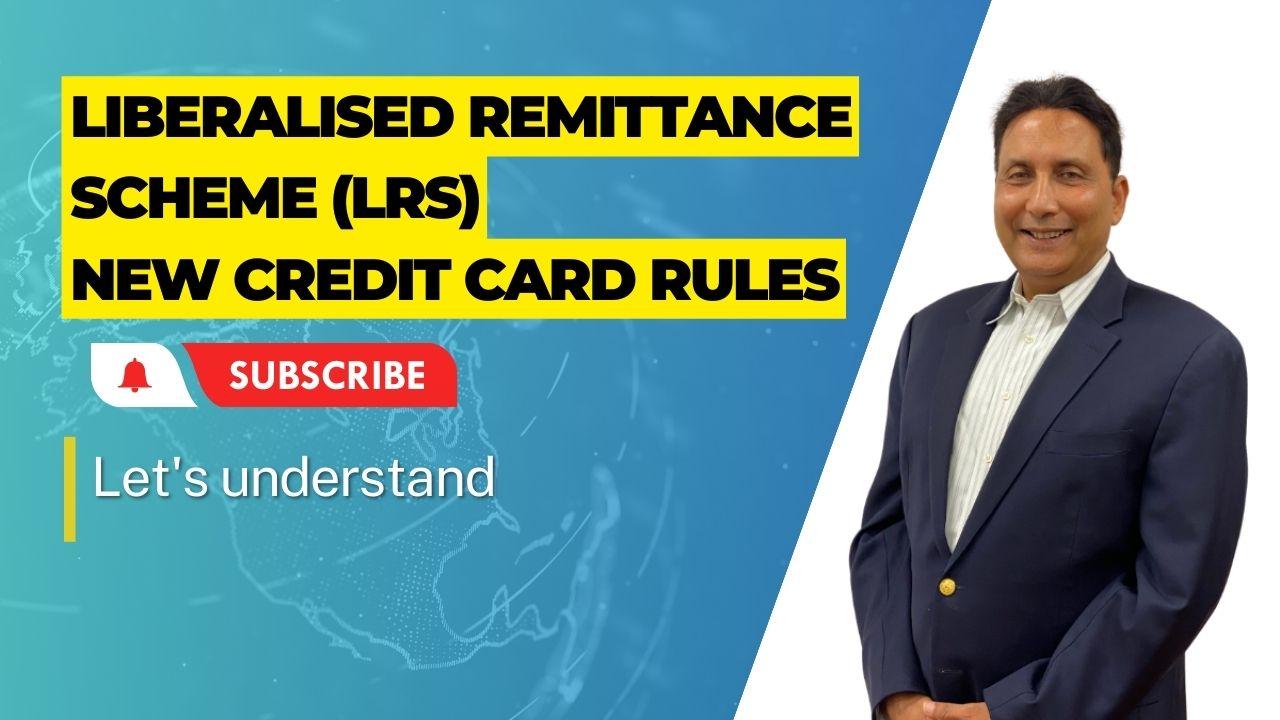
The rules regarding the use of international credit cards have recently undergone some changes. Previously, overseas transactions made using international credit cards were not included in the overall limit of the Liberalised Remittance Scheme (LRS). However, with a slight adjustment, all international credit card transactions made abroad are now considered under the LRS. Consequently, a tax collection at source (TCS) of 20% will be applied to these transactions.
In a recent announcement, the government stated that payments made by individuals using their international debit or credit cards, up to Rs 7 lakh per financial year, will be exempted from the LRS limits and will not attract any TCS.
What is the Liberalised Remittance Scheme (LRS)?
The LRS allows resident individuals, including minors, to remit up to $250,000 per financial year for permissible current or capital account transactions or a combination of both. The remittances under the LRS have been increasing over the years, with $19.61 billion remitted in 2021-22 and over $24 billion in 2022-23, with a significant portion allocated for overseas travel.
Why the Change in Rules for International Credit Card Usage?
While payments made by debit cards were already considered under the LRS, expenses incurred through credit cards were not accounted for within the specified LRS limit. This led to some individuals exceeding the LRS limit. To ensure uniformity and equity in the treatment of different modes of foreign exchange withdrawal and to capture total expenditure accurately, the differential treatment between debit and credit cards needed to be eliminated.
What is the Applicable TCS Rate for Overseas Use of International Credit Cards?
The FY24 Budget proposed a 5% TCS for foreign remittances exceeding Rs 7 lakh towards education and medical treatment. Additionally, it suggested no change in the 0.5% TCS on foreign remittances exceeding Rs 7 lakh for education loans. However, for foreign remittances under the LRS and the purchase of overseas tour programs, the proposed TCS rate was increased from 5% to 20%, without any threshold of Rs 7 lakh. From May 16 to June 30, the TCS rate will be 5% if the spend exceeds Rs 7 lakh on an international credit card abroad. Starting July 1, all international credit card transactions will attract a TCS rate of 20%.
Does the LRS Cover Business Visits of Employees?
No, expenses borne by an employee when deputed by an entity will be treated as residual current account transactions outside the LRS.
Considerations for Indians Using International Credit Cards Overseas
Two important factors to keep in mind when using an international credit card overseas are the LRS limit of $250,000 and the tax implications. Individuals must pay the TCS when using an international credit card for international transactions, and they must claim credit for the tax payment while filing annual income tax returns in India. Those who haven't filed tax returns previously will now need to do so in order to claim credit for the TCS paid on overseas transactions using international credit cards.
Impact on Online Purchases from Foreign Companies
For online purchases made by an Indian customer in India using an international credit card, if the price is quoted in Indian Rupees (INR) and paid in INR, it will not be considered part of the LRS and will not attract TCS. However, if the price is quoted in foreign currency by a foreign company, and the payment is made in INR but converted to foreign currency by the card-sponsored bank and remitted to a foreign company, it will be considered part of the LRS and will attract a 20% TCS.